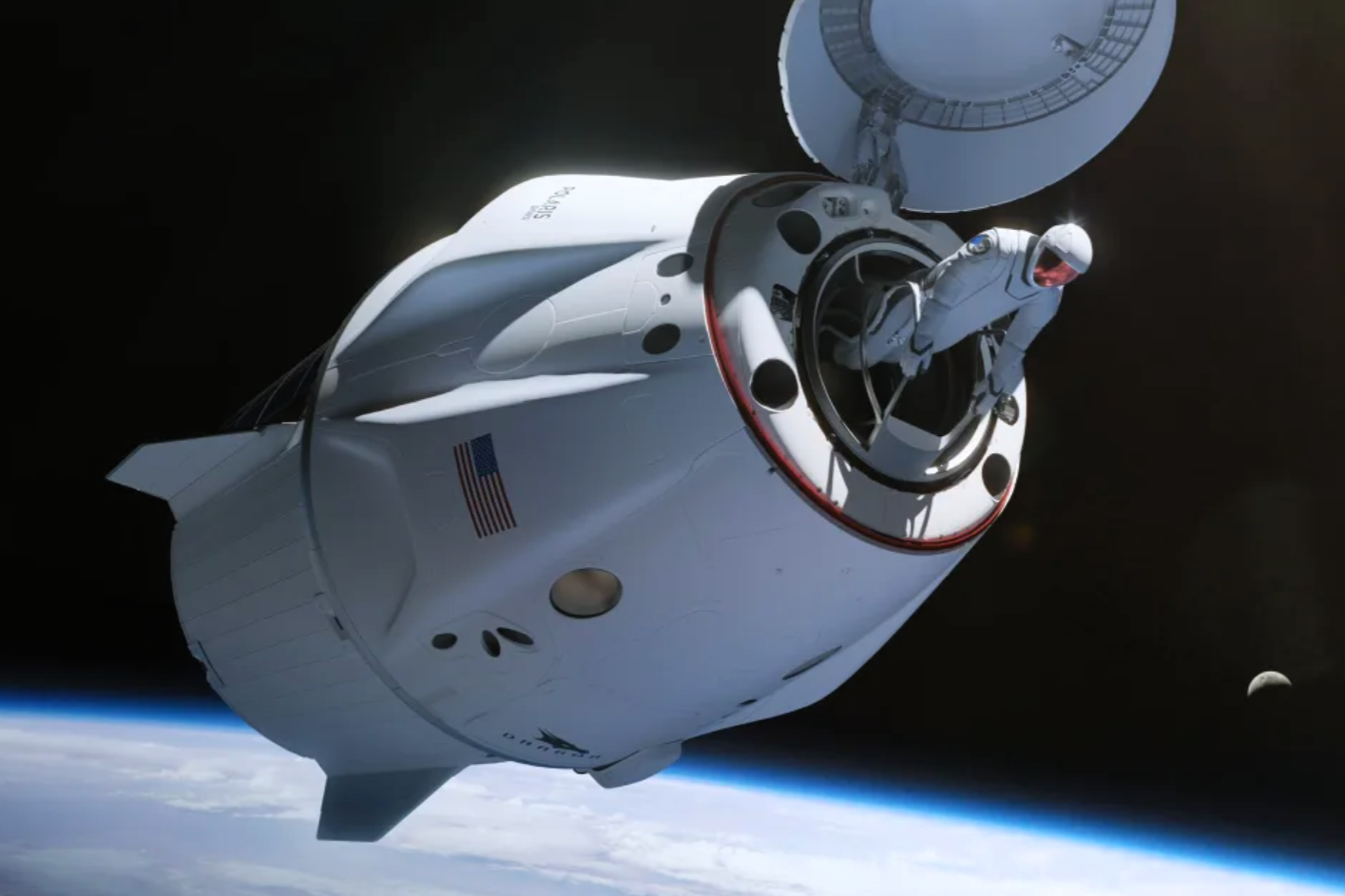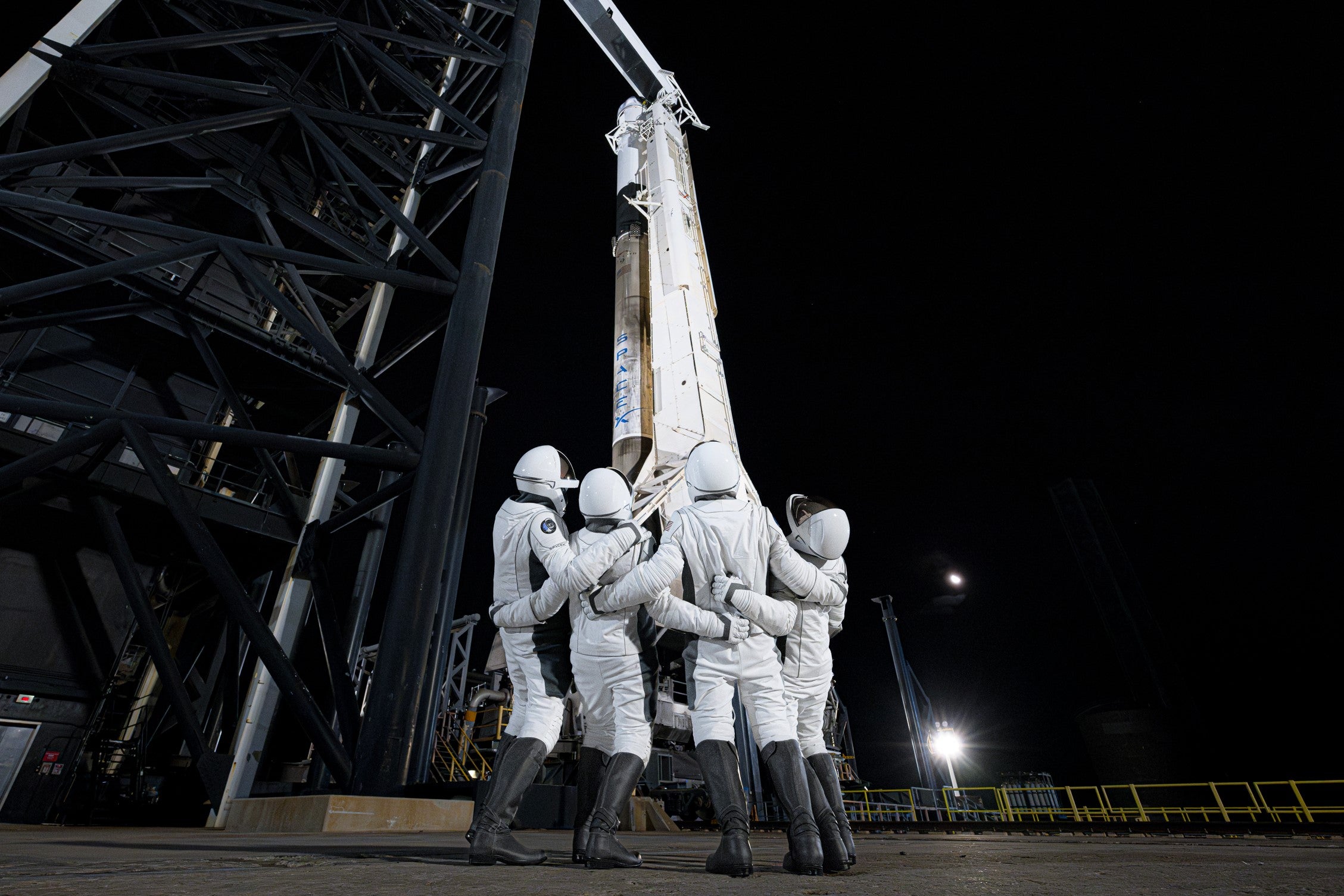Polaris Dawn: Why the world’s first civilian spacewalk could finally make private space travel useful
SpaceX’s latest commercial mission is proving to be as polarising as it is pioneering, writes Anthony Cuthbertson


Just before dawn on Tuesday morning, four private citizens sat atop an 80-metre rocket and lifted off on a mission that will take them further than any human has travelled in more than 50 years.
The Polaris Dawn mission, conducted by SpaceX but paid for by US entrepreneur Jared Isaacman, is the latest in a series of commercial ventures that are opening up space to anyone rich enough to pay for it. Previous private space flights have so far proved divisive: praised by some for heralding a new era of space access, while being ridiculed by others as the latest folly of self-indulgent billionaires.
But Polaris Dawn is a giant leap from the vainglorious joyrides to the edge of space undertaken by Jeff Bezos and Richard Branson, who blew their billions on unconvincing attempts to call themselves astronauts. (Despite Blue Origin repeatedly referring to Bezos as an “international astronaut” during his 10-minute flight to the Kármán line in 2021, the trip did not meet the astronaut criteria set out by the US Federal Aviation Administration, which states that crew members must take part in activities that are “essential to public safety, or contributed to human space flight safety”.)
By contrast, Polaris Dawn will travel more than 10-times further than either Blue Origin or Virgin Galactic have ventured and will last for days, not minutes. More than just a nice view for the crew, SpaceX says the mission will provide “valuable insight to future missions on the road to making life multiplanetary”, alluding to Elon Musk’s ambition to colonise Mars.
Kitted in brand new spacesuits, the Polaris Dawn crew will head out to the Van Allen belts over 1,000km above the Earth, exposing themselves to high concentrations of radiation and conducting the first-ever private spacewalk.
It is the first real-world test of the extravehicular activity (EVA) suits, which are made from some of the same materials that are found in the Falcon 9 rocket that will blast them into space. These are the same suits that SpaceX hopes to use on future missions to the Moon, which will be partly funded by the US taxpayer through Nasa’s Artemis program. The suits could even find themselves being worn by the first human colonisers of Mars.

There will also be a number of historic firsts for the Polaris Dawn mission. It will be the first-ever civilian spacewalk, as well as the highest altitude spaceflight by a woman – the two female crew members, Anna Menon and Sarah Gillis, are both SpaceX employees. They will reach the highest altitude since the Apollo 17 mission in 1972, which was the last time humans travelled beyond low-Earth orbit.
“Jared Isaacman is working to raise the status of commercial spaceflight from fun adventure tourism to serious science and daring exploration,” Jordan Bimm, a space historian at the University of Chicago and author of the book Anticipating the Astronaut, told The Independent.
“Isaacman has also been advocating Nasa to let him conduct a commercial mission to the Hubble Space Telescope to extend its operational life. Nasa is not currently in favour of this option, but the combination of a very high-altitude orbit plus spacewalk is clearly meant to advertise two main components for such a mission.”
While orbiting Earth, the crew of Polaris Dawn will also perform the first-ever test of SpaceX’s Starlink internet service in space, potentially giving them and future astronauts access to high-speed broadband while in zero gravity.
In total, the Polaris Dawn crew members will aim to conduct 36 research studies and experiments during the mission, all with the intention of advancing human spaceflight and improving scientific understanding. Combined with the historic firsts and the risks involved, Polaris Dawn is a genuinely daring expedition.
“Polaris Dawn is yet another example where private enterprise is pushing the limits of space exploration,” said Jacco van Loon, Director of Keele Observatory at Keele University. “SpaceX’s success story seems to be never-ending. Along with the excitement, though, comes important research into human health, a fund-raising campaign for a children’s hospital and a commitment to gender balance."
So while Isaacman may or may not be any different from other egotistical billionaires in his motives, his actions will at least push forward space exploration in a significant way. And for that, he will actually be able to call himself an astronaut.
Join our commenting forum
Join thought-provoking conversations, follow other Independent readers and see their replies
Comments


Bookmark popover
Removed from bookmarks